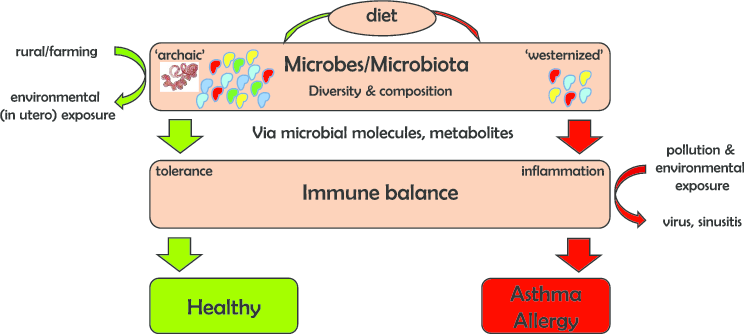The hygiene theory was first put up by Strachan in 1989 as an explanation for the growth in allergy disease, and Graham Rook advanced the “old friends” concept as an improvement or alternate to it in 2003.
The important bacteria that have been a part of the human body’s microbiota, tolerated latent infections, or carrier states throughout human history are highlighted by this idea.
This is distinct from contact with other microbiotic infections that are the root of common children illnesses including the flu, measles, and colds.
It is thought that a few microorganisms that evolved alongside the human body are what the immune system depends on. As a result, the immune system may function abnormally in their absence.There are a number of aspects of the epidemiology of allergic illness that the hygiene hypothesis cannot account for. This comprises;
In America’s “unhygienic” cities, allergic asthma is on the rise.
In certain major European cities, immigrants have a lower incidence of allergy illness than locals.
“Crowd infections” caused by airborne viruses cannot stop allergic sensitivity.
Probiotics’ ineffectiveness as a preventative measure or treatment.
inconsistent study results regarding the function of certain viruses in allergy defense.
As a result, it is important to reevaluate the hygiene hypothesis and any specific microbial agents that may contribute to the prevention of allergic disorders.It is thought that common childhood illnesses and diseases, many of which are referred to as “crowd infections,” which result in either immunization or death, did not exist in the earliest periods of human history.
With the Neolithic agricultural revolution, these illnesses started to spread as a result of the increased population size and density.
The “old friends” theory is currently regarded as the most compelling explanation for the relationship between bacterial species and immune systems.





